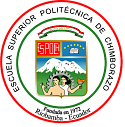Indoor Propagation Model from 10 to 20 Ghz with Corrections for Humidity and Oxygen Concentration for the Andean Region
DOI:
https://doi.org/10.47187/perspectivas.4.2.154Keywords:
Propagation, Losses, Wireless Communications, Anechoic ChamberAbstract
the frequency bands below 6 GHz, which have traditionally been used for the transmission of wireless communications systems, are saturated. Therefore, the search for new frequency bands has been focused on higher frequencies. In this scenario, characterizing the propagation in bands above 6 GHz for various propagation environments is necessary. In this article, an empirical propagation model is presented to predict indoor propagation losses from 10 to 20 GHz. The model was obtained from measurements carried out inside an anechoic chamber, which was designed and built with an internal cover of polyurethane foam as absorbent material and metallic external cover. Measurements were performed in distance and frequency steps of 10 cm and 50 MHz, respectively. In addition, the atmospheric conditions of temperature, humidity and oxygen level inside the chamber were modified, through the insertion of oxygen and water vapor. In order to emulate the weather conditions of mountainous and coastal places. It was determined that the variation of the oxygen and humidity concentration improves the propagation conditions by 7 dB and 15 dB, respectively.
Métricas
References
ITU-R . P.838-3, “Specific attenuation model for rain for use in
prediction methods. ITU,2005.
Leon W. Couch, William J. Weisz Radio Spectrum Utilization. Encyclopedia
of Physical Science and Technology (Third Edition), 2003, Pages
-805
S. Rangan, T. S. Rappaport and E. Erkip Millimeter-Wave Cellular
Wireless Networks: Potentials and Challenges. in Proceedings of the
IEEE, vol. 102, no. 3, pp. 366-385, March 2014
Barrado, A. D. Estudio y caracterización del canal y de la propagación
en ondas milimétricas, orientada a su utilización en redes de comunicaciones
móviles 5G. Modelo de integración de tecnologías para la
provisión de servicios móviles basados en localización y contexto. 2017
IEEE Database of Frequency Allocation. IEEE, 2022
Bhushan, N. et al Network densification: the dominant theme for wireless
evolution into 5G. IEEE Communications Magazine. 2014, pp. 82–89.
Campos, Mónica L; & Flores, Pauina B. Implementación de una cámara
anecoica en la banda de 2-3 GHz. 2006
Balanis, Constantine. Antenna Theory - Analysis and Design. WILEY,
th Edición,2016.
Darío, B; & Juan, G. Criterios generales para el diseño de cámaras
anecóicas. Universidad Tecnológica Nacional, Argentina. 2012.
Jaramillo, Darwin; & Quishpe Estudio, diseño y construcción de un
prototipo de arreglo de antenas microstrip para recepción en la banda x
comparable a la ganancia de una antena parabólica. Tesis de Ingeniería,
Escuela Politécnica Nacional (EPN), Ecuador. 2013.
Altamirano, Dennis. Proyecto de una cámara semi-anecoica. Barcelona.
ITU Propagación de las ondas radioeléctricas en sistemas terrenales
móviles terrestres en las bandas de ondas métricas/decimétricas. Manual
ITU, 2002.
Kiran Chand, Dr. M V Raghavendra, K.Sathyavathi Radiation Analysis
and Design of Pyramidal Horn Antenna. International Journal of Engineering
Research & Technology (Ijert) Volume 02, Issue 10, October
The Weather Channel National and Local Weather Radar, Daily
Forecast, Hurricane and information from The Weather Channel and
weather. 2018
The Weather Channel National and Local Weather Radar, Daily
Forecast, Hurricane and information from The Weather Channel and
weather. 2018
Downloads
Published
How to Cite
Issue
Section
License
Copyright (c) 2022 Jefferson Ribadeneira-Ramirez, Marco Suarez, Edison Sarmiento, Fabricio Javier Santacruz Sulca

This work is licensed under a Creative Commons Attribution 4.0 International License.
Copyright
The authors of the manuscripts will retain their copyright on their articles published in Pespectivas Journal. These rights allow the authors to present their manuscripts in public, prepare derivative works, reproduce them physically by printing and distribute them on their social or research networks. These rights will remain unchanged as long as the authors respect the publication and free access policy of Perspectivas Journal.
Publication Rights
Perspectivas Journal reserves all first publication rights on each of the articles that the authors have sent to its review and publication process. It implies that authors will only exercise their copyright if they state the source and origin of the publication correctly, mainly when they distribute, share, present, or use their articles' total or partial content.














